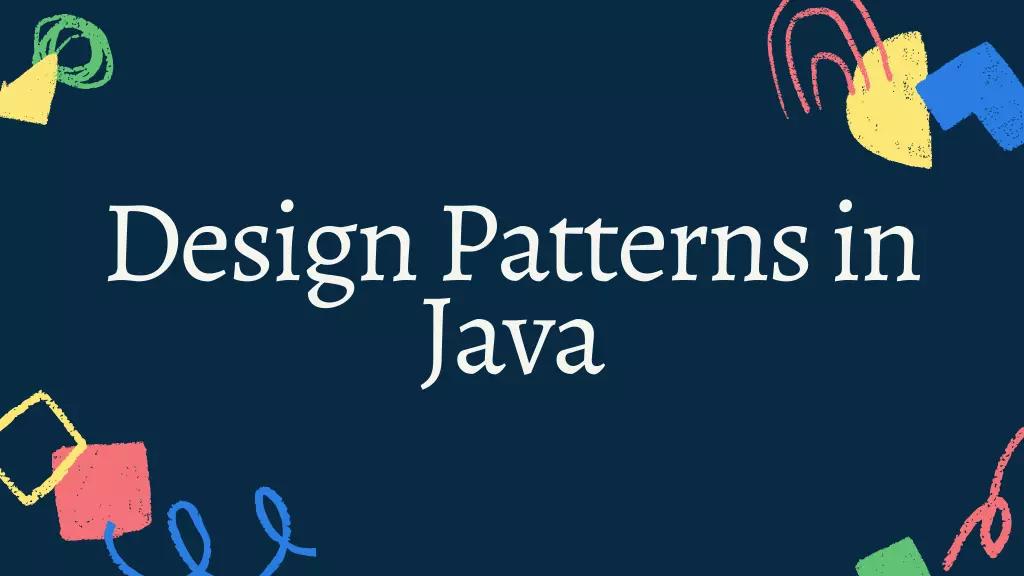Design patterns are extremely popular among developers. But do you know what design pattern is and what are the types of patterns that are being used by other developers? With this blog, we will help you in understanding the concept of design patterns, different available patterns and scenarios to use them.
As of 2025, Java remains a dominant programming language—over 90% of Fortune 500 companies use it for software development due to its reliability, scalability, and adaptability.
What are Design Patterns in Java?
Design patterns are proven solutions for solving certain problems faced during the development of the software. It represents best practices used by software developers. Design patterns have been obtained by trial and error that software developers did over an abundant period.
In short, design patterns are already described and offer an industry-standard strategy to resolve recurring issues. Design patterns empower reusability that leads to robust, highly maintainable code. It also helps in lowering the total cost of ownership of the software product. Apart from that, design patterns make the code easier to understand and debug.
Some advantages of Design Patterns are:
-
It provides reusable code for multiple projects
-
Offer transparency to the design of applications
-
Deliver clarity to the system architecture
-
Proffer solutions to define the architecture of a system
-
Give well-proven and testified solutions
Types of Design Patterns in Java
In java, there are multiple design patterns that are classified into three major categories, including Creational, Structural and Behavioural design patterns. So let’s check which pattern falls into each of these categories.
Creational Design Patterns
Creational design patterns deal with the creation of objects in a controlled manner by reducing complexities and instability. It addresses issues by decoupling clients from the initialization process. These processes can be furthered divided into class creational patterns (uses inheritance in initialization) and object-creational patterns (use delegation to complete a task).
It can be used when developers want to create a simple DBConnection class to connect to the database and access databases from multiple locations using code. And to create multiple instances that are alike and achieve loose coupling.
Structural Design Patterns
Structural design patterns are all about the object and class structure. It uses inheritance to compose interfaces. Put it simply, design patterns are all about organizing different objects and classes to create a bigger structure and offer new functionalities.
Structural design patterns can be used when interfaces are not compatible with each other but a developer wants to create a relationship between them using an adapter.
-
Adapter
-
Composite
-
Decorator
-
Facade
-
Flyweight
-
Proxy
Behavioural Design Patterns
Behavioural design patterns help identify common patterns of communication between objects and discern these patterns. It minimizes the complexity and replication of code. These patterns also provide better support and flexibility.
-
Iterator
-
Mediator
-
Memento
-
Observer
-
Template Method
Conclusion
In this article, we have learned a lot about design patterns in Java. We have also discussed their categories and types respectively. These patterns are going to help you in the development process of your software as they provide a clear idea of designing the architecture of the software.
However, if you don’t feel comfortable with designing your own app, you can also hire developers who have expertise in a similar sector. Remember, this is just an overview of the design patterns, we will be discussing further in our upcoming blogs. So stay tuned!
FAQs
1. What are design patterns in Java and why are they important?
Design patterns in Java are proven solutions for common software development problems. They provide reusable, maintainable, and scalable code, improve system architecture clarity, and help reduce development costs while ensuring robust and error-free applications.
2. What are the main categories of Java design patterns?
Java design patterns are classified into three main categories: Creational (object creation control), Structural (organization of objects and classes), and Behavioral (communication and interaction patterns among objects). Each category addresses different aspects of software design.
3. Which are the most commonly used Creational design patterns in Java?
Popular Creational patterns include Singleton, Factory Method, Abstract Factory, Builder, Prototype, and Object Pool. These patterns help in creating objects efficiently while reducing complexity and ensuring loose coupling.
4. How do Structural and Behavioral design patterns differ in Java?
Structural patterns focus on organizing classes and objects to create larger structures, such as Adapter, Decorator, and Facade. Behavioral patterns focus on communication between objects and managing responsibilities, such as Observer, Strategy, Command, and Template Method.
5. How can learning Java design patterns benefit developers?
Learning Java design patterns helps developers write cleaner, more maintainable code, improve system architecture, speed up development by reusing proven solutions, and solve recurring problems efficiently. It also enhances collaboration and reduces debugging time in complex projects.
Author Bio: Mahipal Nehra is the Marketing Manager at Decipher Zone Technologies, specializing in content strategy, backend development, and digital transformation.

